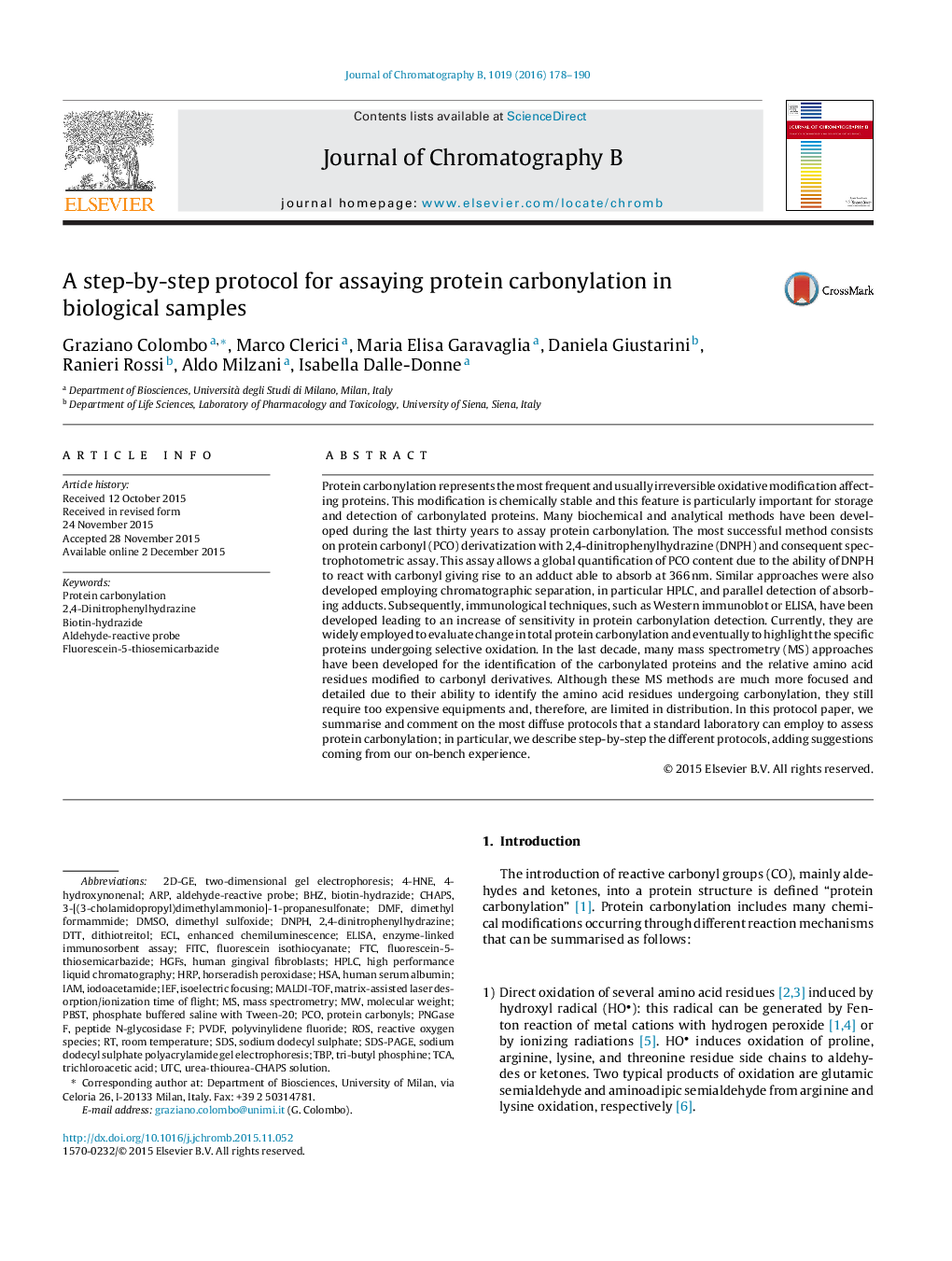| کد مقاله | کد نشریه | سال انتشار | مقاله انگلیسی | نسخه تمام متن |
|---|---|---|---|---|
| 1211898 | 1494036 | 2016 | 13 صفحه PDF | دانلود رایگان |
• Protein carbonylation is a frequent irreversible oxidative protein modification.
• Many cheap and user-friendly protocols are available for evaluating carbonylation.
• We describe and comment various step-by-step protocols that use labelling molecules.
Protein carbonylation represents the most frequent and usually irreversible oxidative modification affecting proteins. This modification is chemically stable and this feature is particularly important for storage and detection of carbonylated proteins. Many biochemical and analytical methods have been developed during the last thirty years to assay protein carbonylation. The most successful method consists on protein carbonyl (PCO) derivatization with 2,4-dinitrophenylhydrazine (DNPH) and consequent spectrophotometric assay. This assay allows a global quantification of PCO content due to the ability of DNPH to react with carbonyl giving rise to an adduct able to absorb at 366 nm. Similar approaches were also developed employing chromatographic separation, in particular HPLC, and parallel detection of absorbing adducts. Subsequently, immunological techniques, such as Western immunoblot or ELISA, have been developed leading to an increase of sensitivity in protein carbonylation detection. Currently, they are widely employed to evaluate change in total protein carbonylation and eventually to highlight the specific proteins undergoing selective oxidation. In the last decade, many mass spectrometry (MS) approaches have been developed for the identification of the carbonylated proteins and the relative amino acid residues modified to carbonyl derivatives. Although these MS methods are much more focused and detailed due to their ability to identify the amino acid residues undergoing carbonylation, they still require too expensive equipments and, therefore, are limited in distribution. In this protocol paper, we summarise and comment on the most diffuse protocols that a standard laboratory can employ to assess protein carbonylation; in particular, we describe step-by-step the different protocols, adding suggestions coming from our on-bench experience.
Journal: Journal of Chromatography B - Volume 1019, 15 April 2016, Pages 178–190
